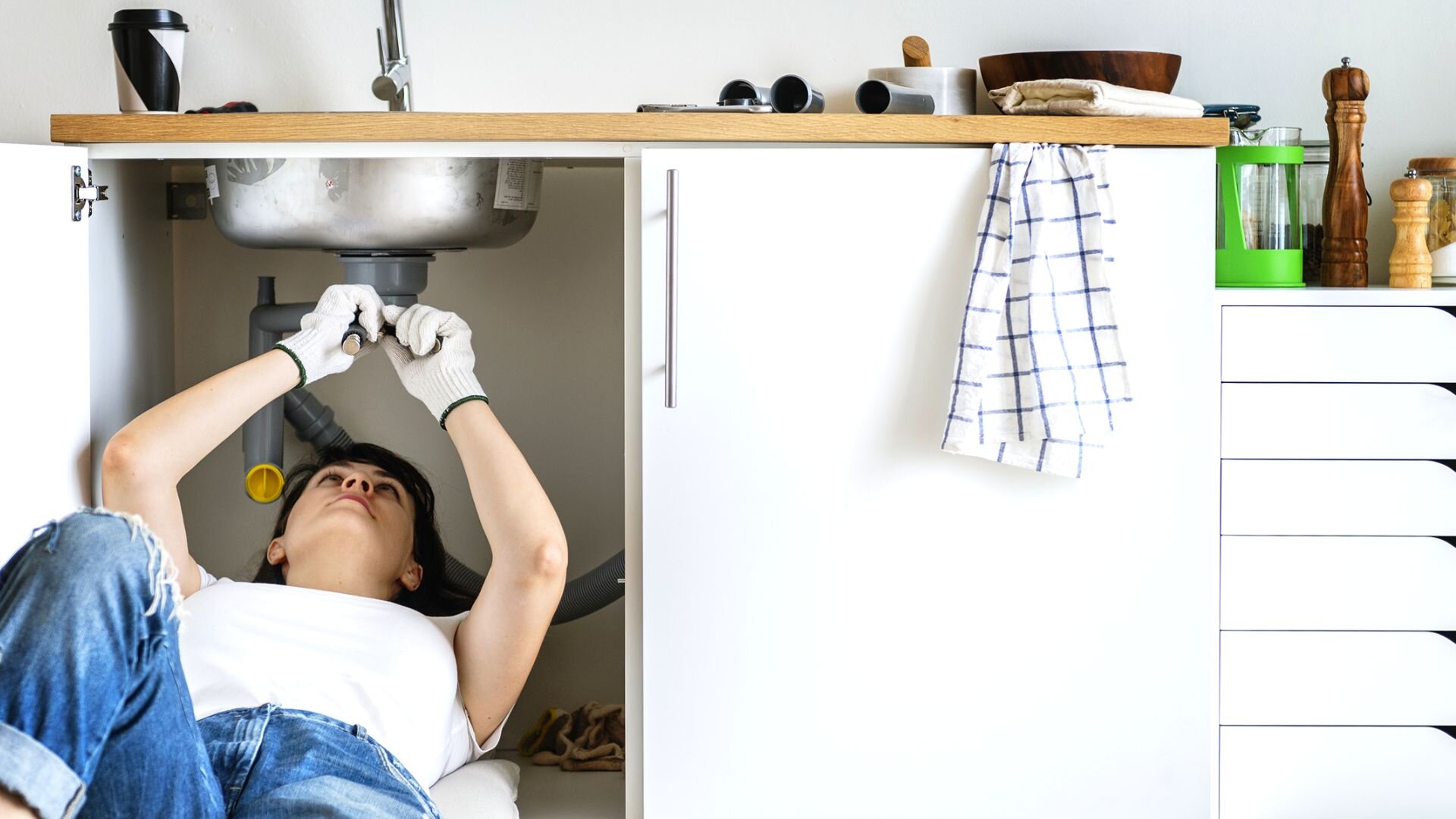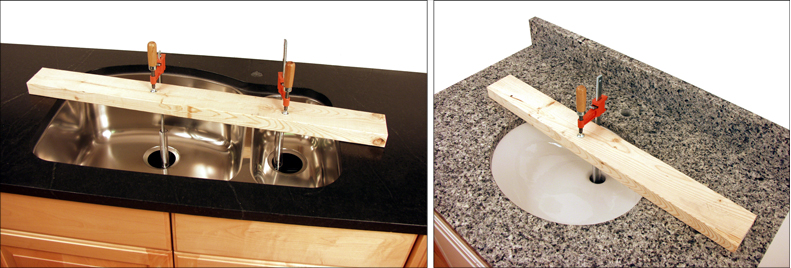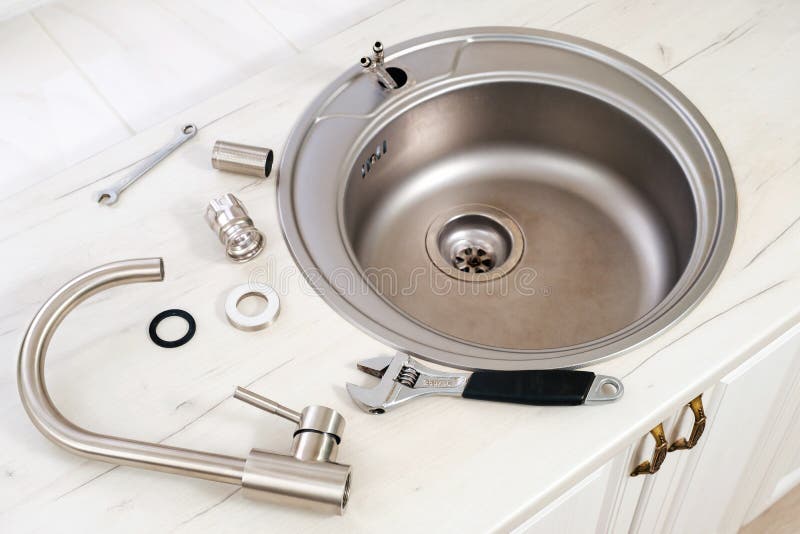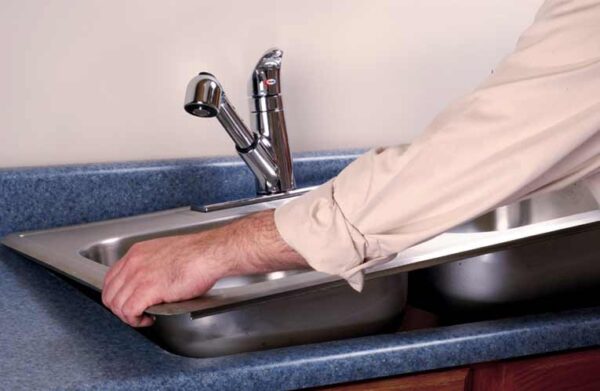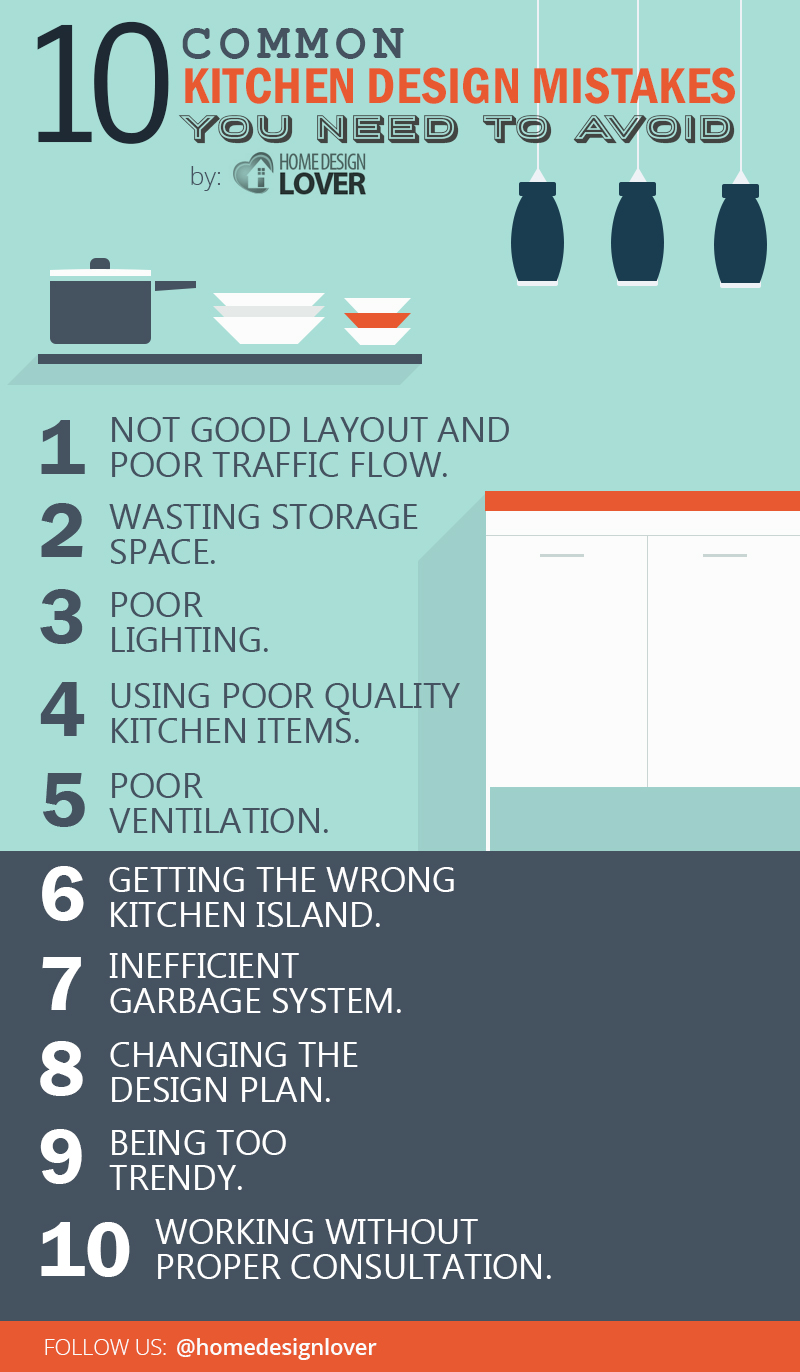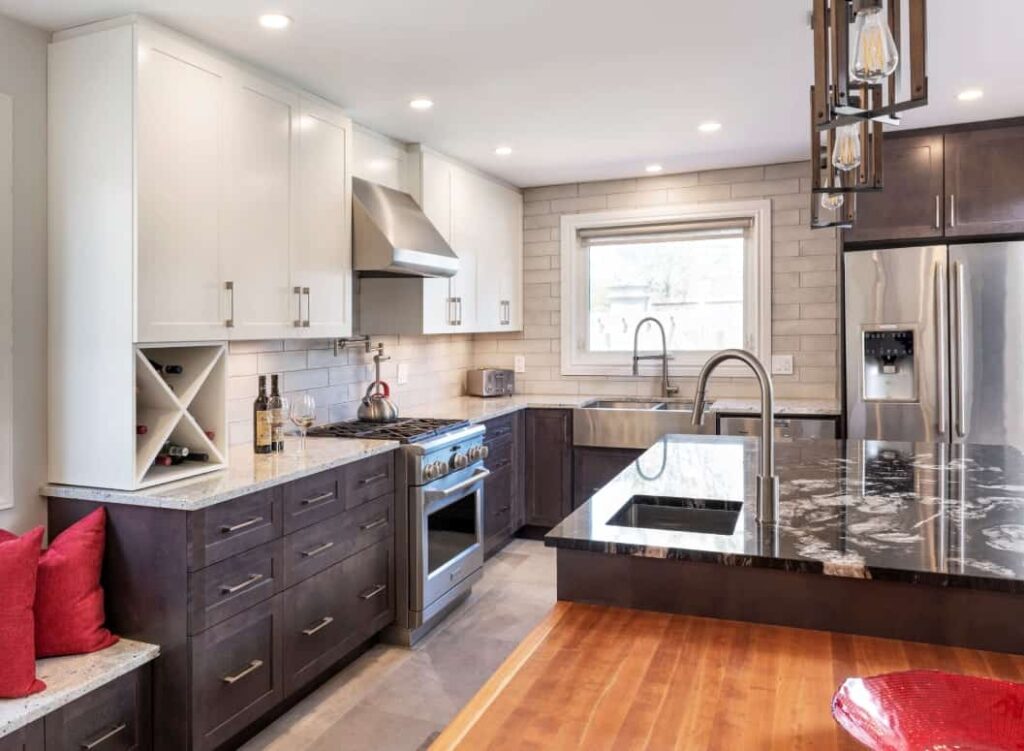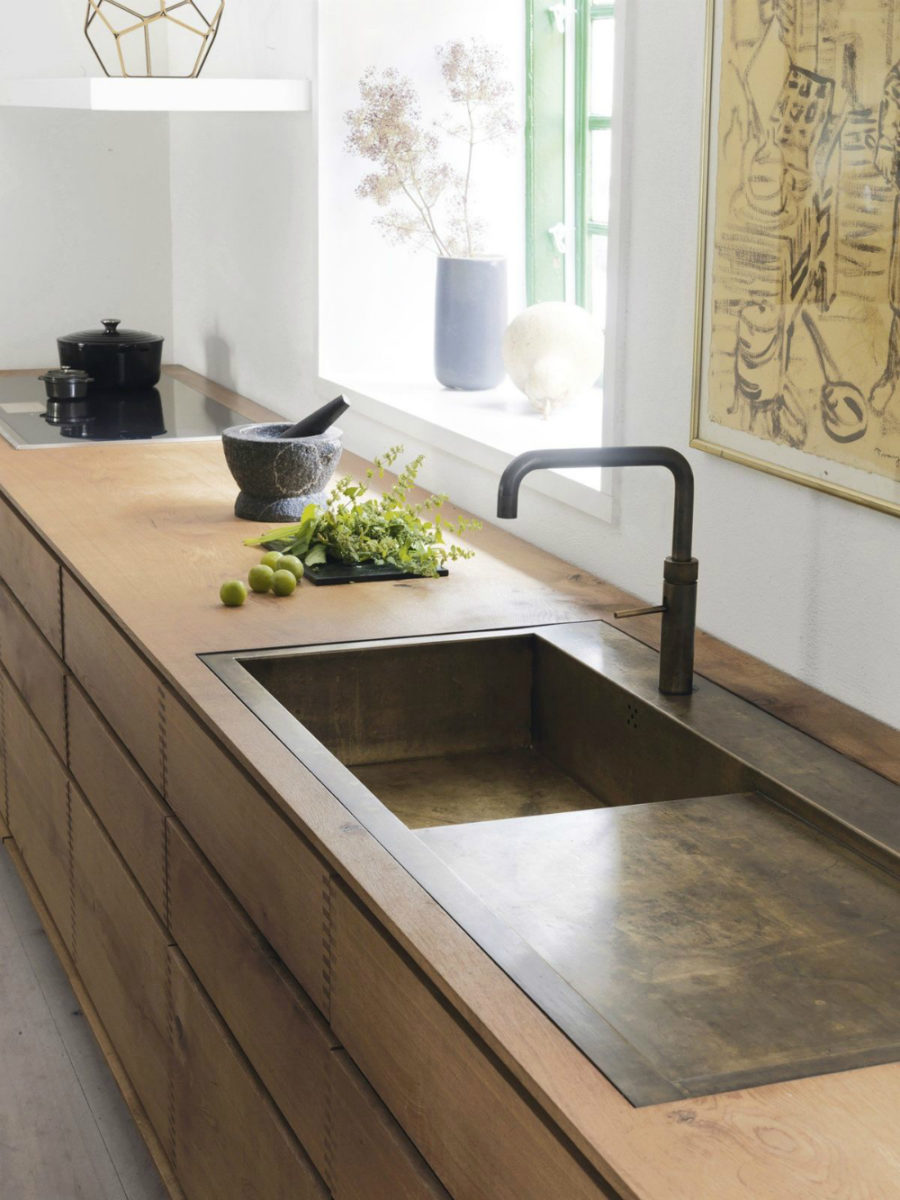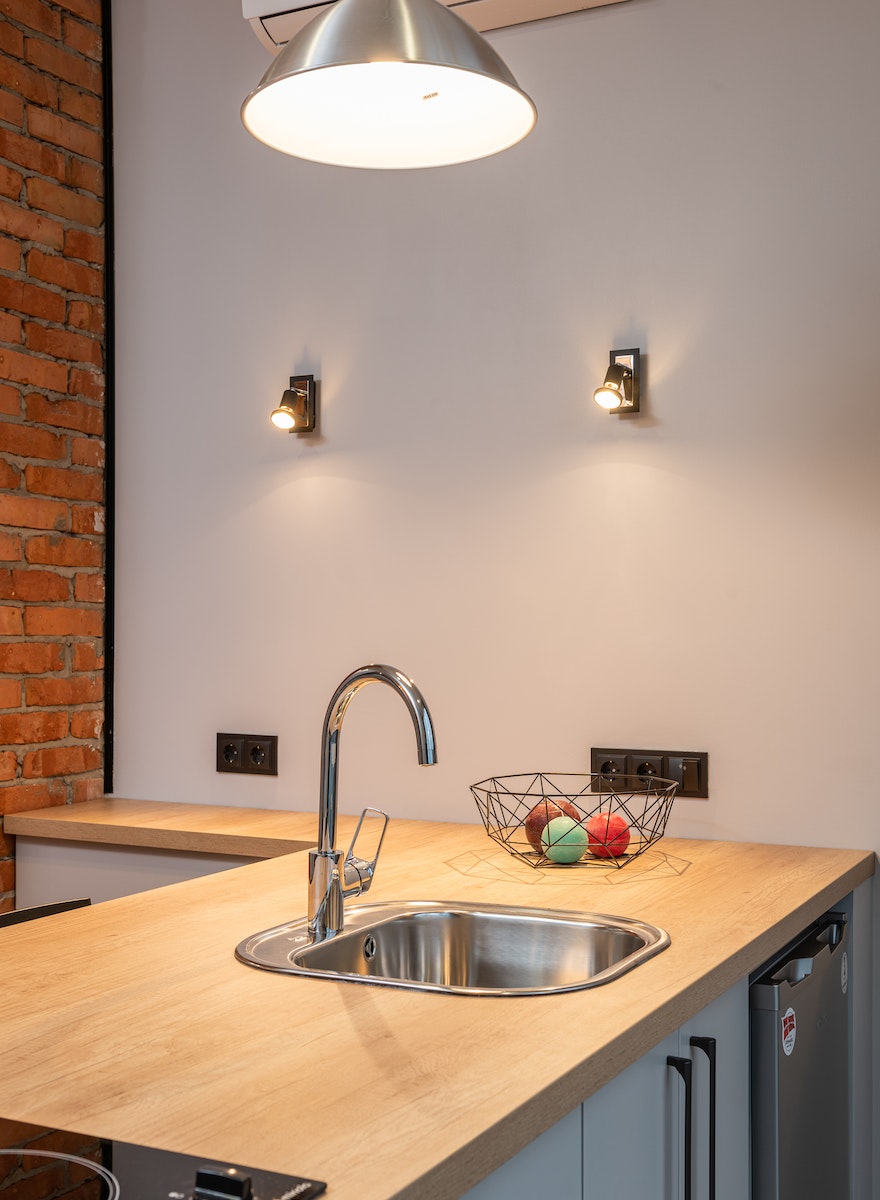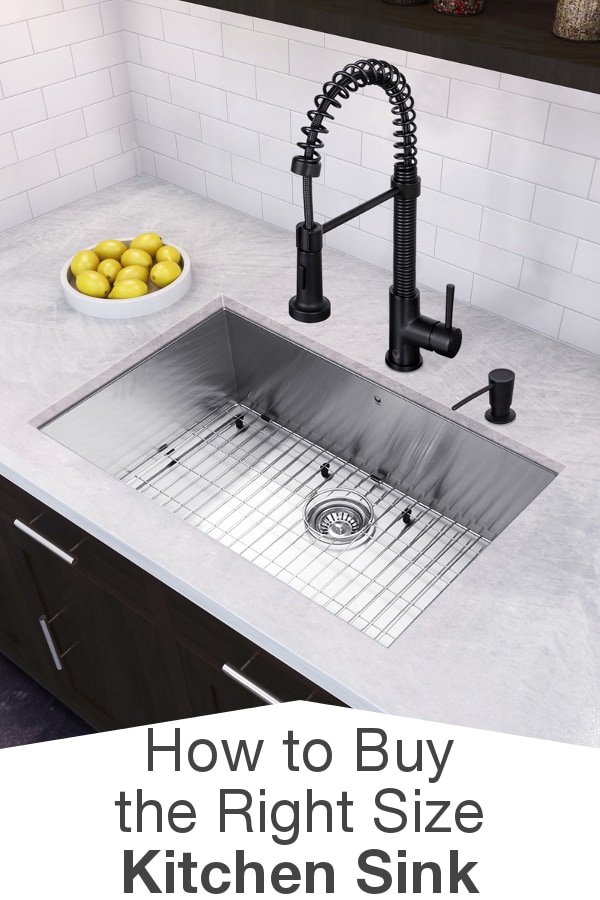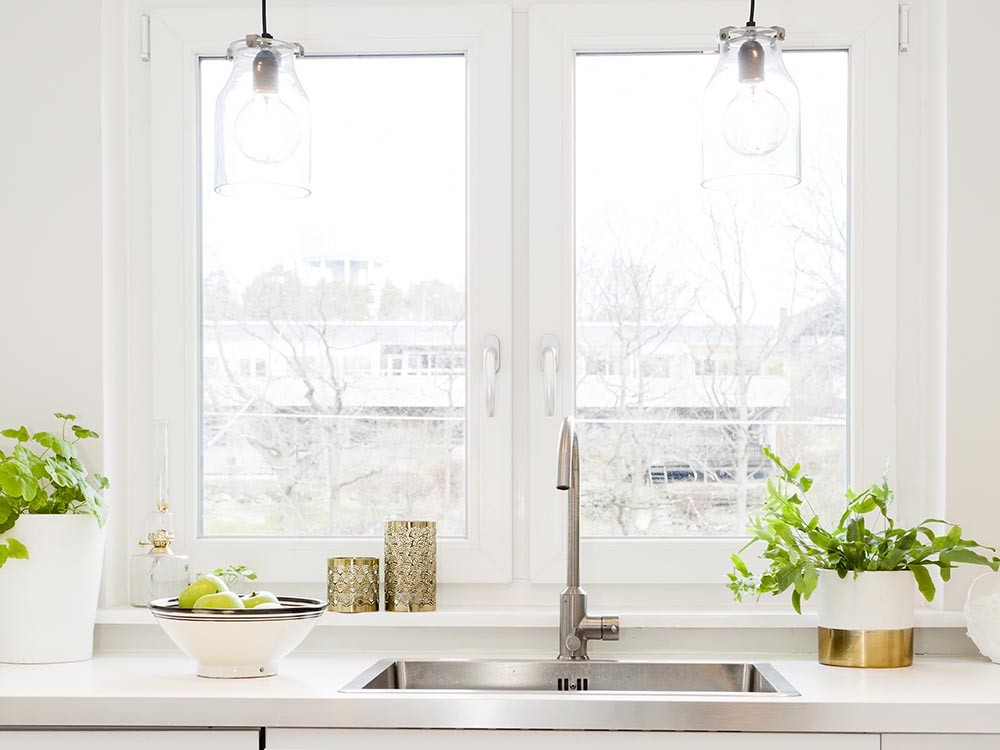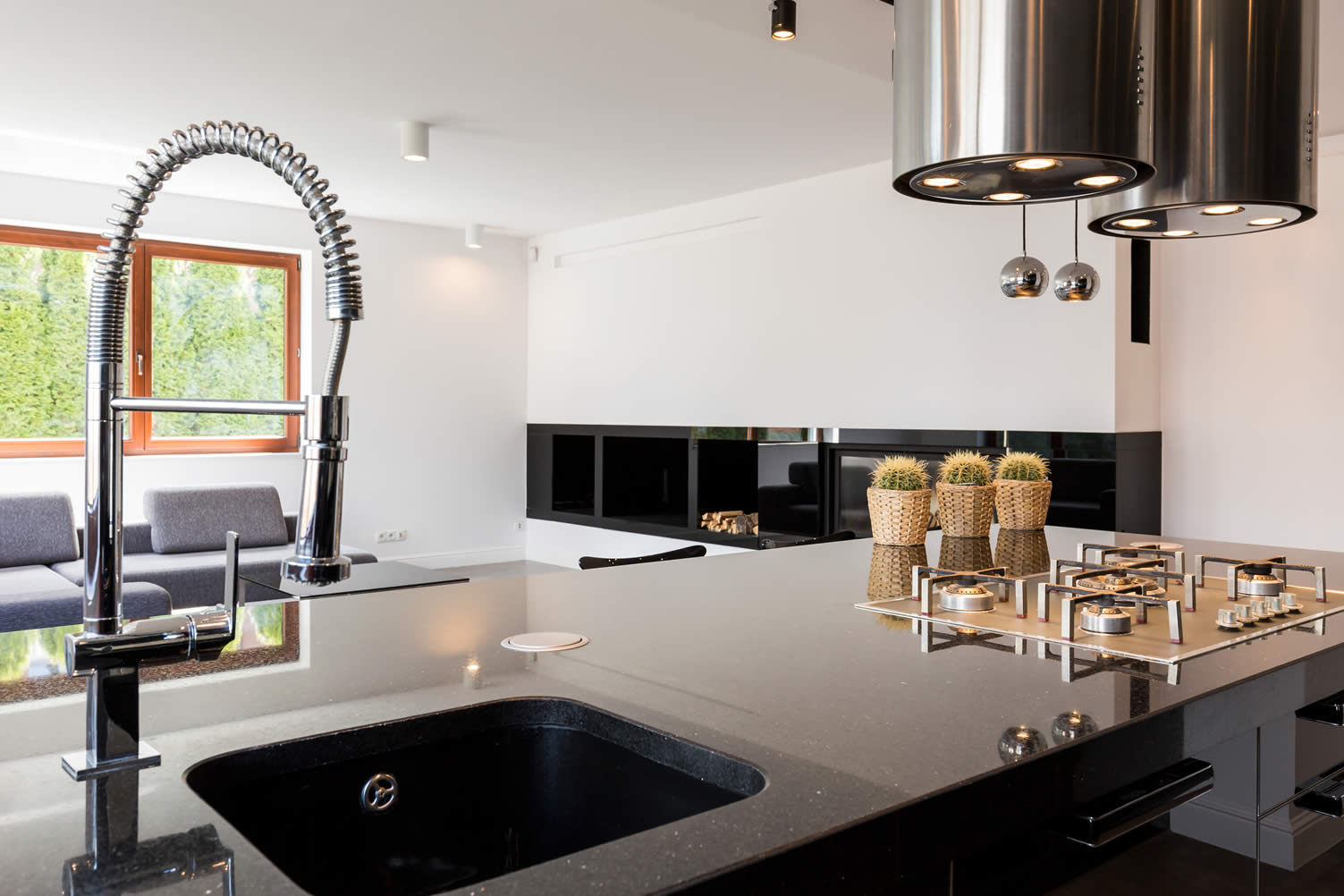Installing a new kitchen sink can be a daunting task, but with the right tools and knowledge, it can be a satisfying DIY project. Whether you're replacing an old sink or installing one for the first time, it's important to do it correctly to avoid any future problems. Here's a step-by-step guide on how to install a kitchen sink yourself.How to Install a Kitchen Sink
If you're replacing an old kitchen sink, the first step is to remove the old one. Start by turning off the water supply and disconnecting the water lines and drain pipes. Once the old sink is removed, you can follow the same steps as installing a new one.How to Replace a Kitchen Sink
Installing a kitchen sink yourself can save you money and give you a sense of accomplishment. However, it's important to have some basic DIY skills and knowledge before attempting this project. Make sure you have all the necessary tools and materials before beginning.DIY Kitchen Sink Installation
Step 1: Measure the space for your new sink. Make sure to take accurate measurements of the sink opening, as well as the distance between the faucet holes and the drain hole. Step 2: Choose the right sink for your installation. There are different types of kitchen sinks available, such as top-mount, undermount, and farmhouse sinks. Step 3: Install the faucet and any other accessories, such as a soap dispenser or sprayer, according to the manufacturer's instructions. Step 4: Install the sink strainer and drain assembly. Apply plumber's putty around the strainer and insert it into the drain hole. Secure it from underneath with the provided hardware. Step 5: Place the sink into the opening and secure it with mounting clips or brackets, depending on the type of sink you have. Step 6: Connect the water supply lines and drain pipes to the sink. Make sure they are tight and secure. Step 7: Turn on the water supply and check for any leaks. If there are any, tighten the connections or use plumber's tape to seal them. Step 8: Apply a bead of silicone sealant around the edges of the sink to create a watertight seal. Step 9: Clean up any excess sealant or debris and let it dry for at least 24 hours before using the sink.Step-by-Step Guide for Installing a New Kitchen Sink
Some of the tools you'll need for installing a kitchen sink include a tape measure, adjustable wrench, screwdriver, pliers, silicone sealant, and a hacksaw. Make sure to also have safety equipment, such as gloves and safety glasses, on hand.Tools Needed for Installing a Kitchen Sink
- Make sure the sink is level before securing it in place. - Use a putty knife to remove any excess sealant after it has dried. - Follow the manufacturer's instructions for installing the sink and any accessories. - If you're unsure about any step, consult a professional plumber.Tips for Installing a New Kitchen Sink
One of the most common mistakes when installing a kitchen sink is not properly sealing it with silicone. This can lead to leaks and water damage. Another mistake is not measuring accurately, which can result in a sink that doesn't fit properly.Common Mistakes to Avoid When Installing a Kitchen Sink
The cost of installing a new kitchen sink can vary greatly depending on the type of sink, materials used, and labor costs. On average, it can range from $200 to $500, but this can increase if there are any plumbing or electrical changes needed.Cost of Installing a New Kitchen Sink
To measure for a new kitchen sink, you'll need to measure the width and length of the sink opening, as well as the depth of the countertop. You'll also need to measure the distance between the faucet holes and the drain hole.How to Measure for a New Kitchen Sink
When choosing a kitchen sink for your installation, consider the size and style of your kitchen, as well as your budget. Make sure to also choose a sink that fits your lifestyle and cooking needs. Installing a new kitchen sink may seem like a daunting task, but with the right tools and knowledge, it can be a rewarding DIY project. By following these steps and tips, you can successfully install a new sink and improve the functionality and aesthetic of your kitchen.Choosing the Right Kitchen Sink for Your Installation
The Benefits of Installing a New Kitchen Sink

Enhance the Aesthetics of Your Kitchen
 If you’re thinking of giving your kitchen a makeover, one of the best ways to start is by installing a new kitchen sink.
Not only does it serve as a functional component of your kitchen, but it can also make a huge impact on the overall look and feel of your space.
With a variety of styles, materials, and colors to choose from, you can easily find a sink that complements your kitchen design and adds a touch of elegance to your space. Whether you prefer a traditional farmhouse sink or a modern stainless steel one, a new kitchen sink can instantly elevate the aesthetics of your kitchen.
If you’re thinking of giving your kitchen a makeover, one of the best ways to start is by installing a new kitchen sink.
Not only does it serve as a functional component of your kitchen, but it can also make a huge impact on the overall look and feel of your space.
With a variety of styles, materials, and colors to choose from, you can easily find a sink that complements your kitchen design and adds a touch of elegance to your space. Whether you prefer a traditional farmhouse sink or a modern stainless steel one, a new kitchen sink can instantly elevate the aesthetics of your kitchen.
Increase Your Kitchen's Functionality
 Aside from its visual appeal, a new kitchen sink can also greatly improve the functionality of your kitchen.
With the right size and design, it can make tasks such as washing dishes and preparing food easier and more efficient.
For example, a deeper sink can accommodate larger pots and pans, while a sink with multiple compartments can help with multitasking. You can also opt for additional features such as a pull-out faucet or a built-in soap dispenser to make your daily kitchen chores more convenient.
Aside from its visual appeal, a new kitchen sink can also greatly improve the functionality of your kitchen.
With the right size and design, it can make tasks such as washing dishes and preparing food easier and more efficient.
For example, a deeper sink can accommodate larger pots and pans, while a sink with multiple compartments can help with multitasking. You can also opt for additional features such as a pull-out faucet or a built-in soap dispenser to make your daily kitchen chores more convenient.
Improve Hygiene and Cleanliness
 Old and worn out sinks can be breeding grounds for bacteria and germs, making it harder to maintain a clean and hygienic kitchen.
A new kitchen sink with a smooth surface and modern features can make cleaning and maintaining your sink a breeze.
The non-porous materials used in many sinks today are also resistant to stains and scratches, ensuring that your sink stays looking clean and new for a longer period of time. This not only promotes a healthier environment but also adds to the overall appeal of your kitchen.
Old and worn out sinks can be breeding grounds for bacteria and germs, making it harder to maintain a clean and hygienic kitchen.
A new kitchen sink with a smooth surface and modern features can make cleaning and maintaining your sink a breeze.
The non-porous materials used in many sinks today are also resistant to stains and scratches, ensuring that your sink stays looking clean and new for a longer period of time. This not only promotes a healthier environment but also adds to the overall appeal of your kitchen.
Increase the Value of Your Home
 Installing a new kitchen sink is a small but impactful investment that can greatly increase the value of your home.
Not only does it add to the aesthetics and functionality of your kitchen, but it also shows potential buyers that your kitchen is well-maintained and up-to-date.
This can make a huge difference in the overall value of your home and can potentially lead to a higher selling price if you decide to put it on the market. Therefore, investing in a new kitchen sink is not only beneficial for your current lifestyle, but also for your future financial plans.
In conclusion, a new kitchen sink is a simple yet effective way to enhance the overall design and functionality of your kitchen. It can improve the aesthetics, increase functionality, promote hygiene and cleanliness, and add value to your home. With so many options available, you can easily find a sink that fits your personal style and budget. So why wait? Upgrade your kitchen with a new sink and enjoy the many benefits it has to offer.
Installing a new kitchen sink is a small but impactful investment that can greatly increase the value of your home.
Not only does it add to the aesthetics and functionality of your kitchen, but it also shows potential buyers that your kitchen is well-maintained and up-to-date.
This can make a huge difference in the overall value of your home and can potentially lead to a higher selling price if you decide to put it on the market. Therefore, investing in a new kitchen sink is not only beneficial for your current lifestyle, but also for your future financial plans.
In conclusion, a new kitchen sink is a simple yet effective way to enhance the overall design and functionality of your kitchen. It can improve the aesthetics, increase functionality, promote hygiene and cleanliness, and add value to your home. With so many options available, you can easily find a sink that fits your personal style and budget. So why wait? Upgrade your kitchen with a new sink and enjoy the many benefits it has to offer.








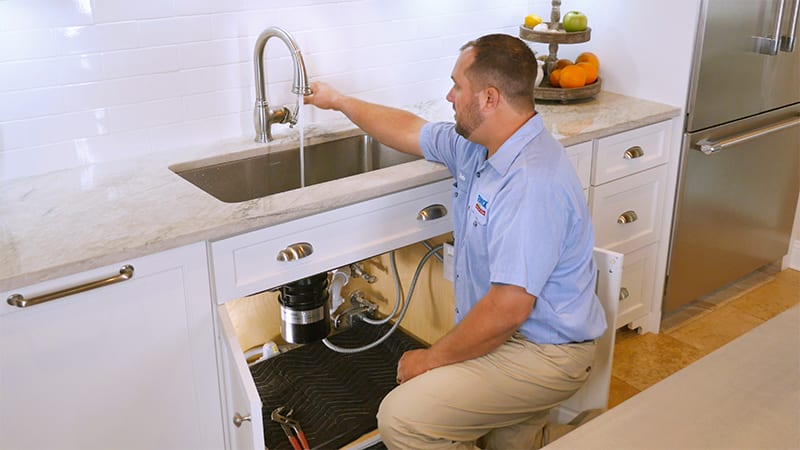


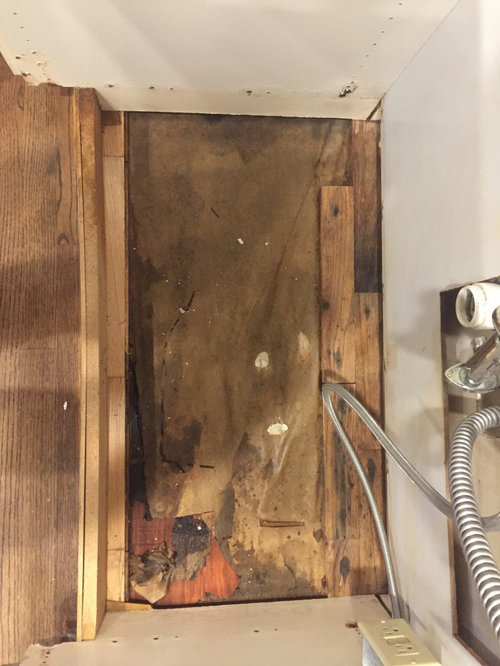








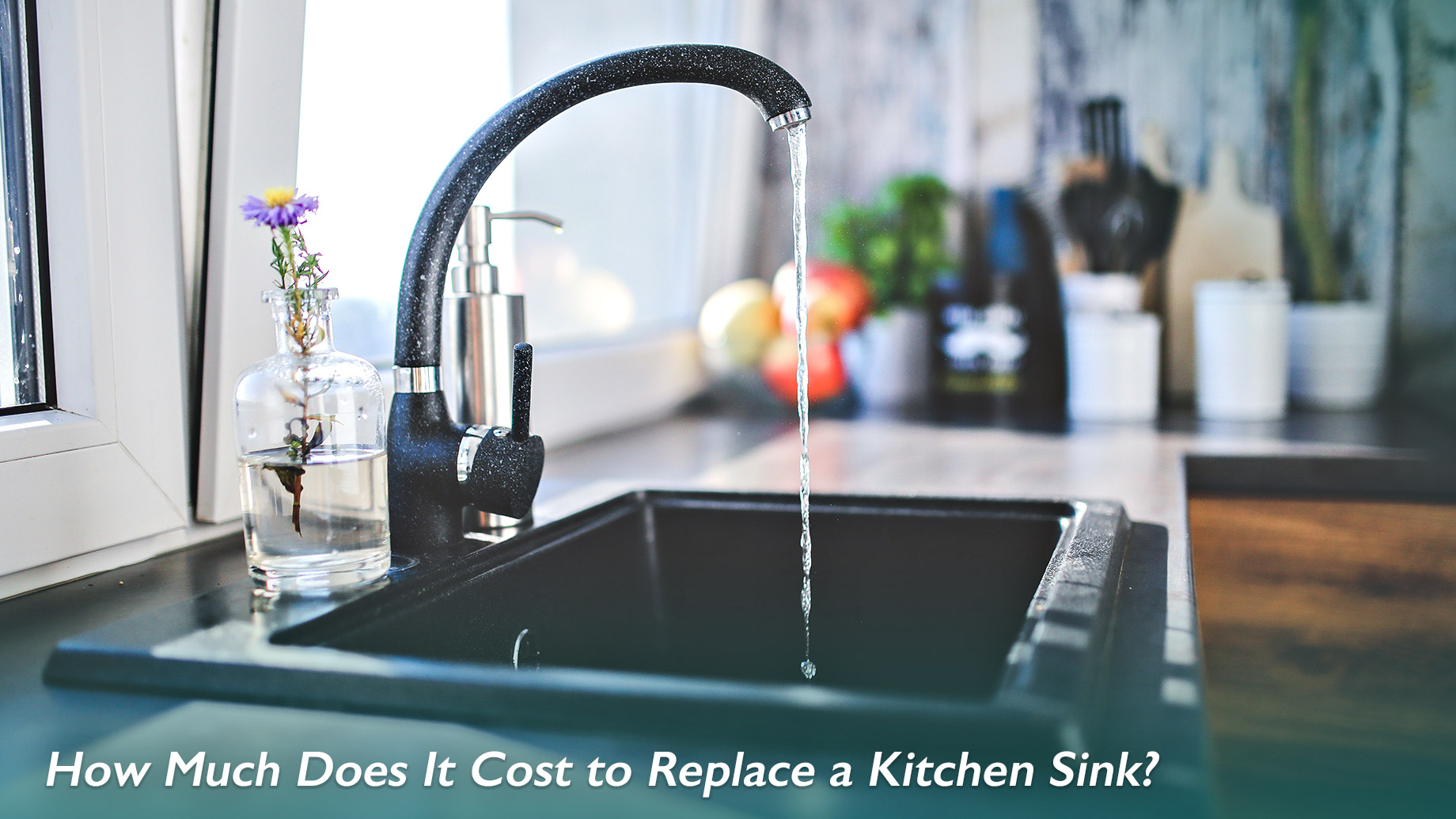






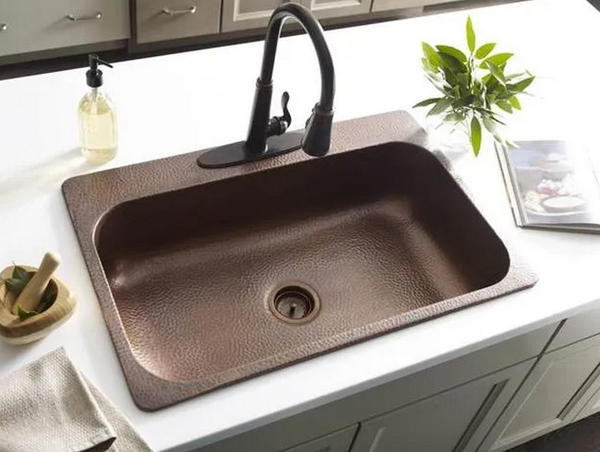
:no_upscale()/cdn.vox-cdn.com/uploads/chorus_asset/file/19495086/drain_0.jpg)







